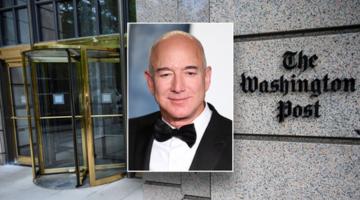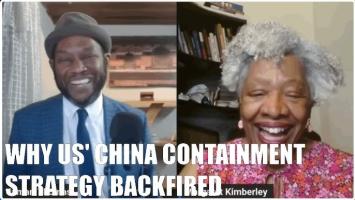Thirty years after Timothy McVeigh’s Oklahoma City bombing, his legacy lives on in the racist mass shooters, anti-government extremists, and MAGA reactionaries who continue to target Black communities, immigrants, and marginalized groups. McVeigh’s blueprint of white nationalist violence has spread far and wide, fueled by the same toxic mix of racial paranoia, anti-left conspiracies, and far-right radicalization that birthed the Trump era.
Before settling on a hospital, Timothy Wilson considered myriad targets for a terrorist attack, including a mosque, a synagogue, and an elementary school attended mostly by Black children. As he narrowed down his choices in the spring of 2021, however, and his plan began to take shape, the 36-year-old white supremacist texted a question to another plotter: “How did McVeigh do it?”
Thirty years ago this week, Timothy McVeigh rented a Ryder truck, loaded it with a 7,000-pound fertilizer bomb, drove to the Alfred P. Murrah Federal Building in downtown Oklahoma City, parked, lit the fuse and escaped to a waiting getaway car. The blast sheared off the front third of the building, killing 168 people, including 15 preschoolers who had just started their morning at the daycare center on the second floor. The Oklahoma City bombing is widely believed to be the deadliest act of domestic terrorism in US history (although it is not entirely clear how many were killed in racist pogroms such as the 1898 massacre in Wilmington, North Carolina or the 1919 putsch in Elaine, Arkansas).
A decorated veteran of Operation Desert Storm, McVeigh’s murderous display of shock and awe was a dog whistle to angry young white men like Wilson-–whose own plans to bomb a Missouri hospital were aborted by FBI agents—Eric Harris and Dylan Klebold who gunned down 12 of their classmates and a teacher at their Colorado high school in 1999; 21-year-old Dylan Roof who murdered nine African American worshippers at a Charleston church in 2015; 18-year-old Payton Gendron who walked into a Buffalo supermarket in 2022 and opened fire with a semi-automatic rifle, killing 10 African Americans and 21-year-old National Guard member, Jack Teixeira, who leaked troves of classified military intelligence in preparing for a race war. In one video, Teixeira is dressed in camouflage fatigues with his finger wrapped around the trigger of a semiautomatic rifle. Facing the camera, he says:
“Jews scam, niggers rape, and I mag dump.”
The case can be made that McVeigh is this generation’s Godfather of the Great Replacement Theory, an irrational, atavistic fear that nonwhites are overtaking whites in the workplace and society. Similar to Charles Manson who hoped to pin the 1969 slayings at Roman Polanski’s Hollywood home on the Black Panthers or some other radical organization, McVeigh, who was executed in 2001, drew inspiration from “The Turner Diaries,” a 1978 novel by a neo-Nazi, in forming his plans for a terrorist attack.
This politics of white aggrievement that first found its voice in the Oklahoma City bombing on April 19, 1995, animates far-right extremist groups like the Proud Boys and Oath Keepers who were among the throngs of mostly white protesters who stormed Capitol Hill four years ago to overturn the 2020 election results.
In a sense, Trump owes his political career to McVeigh, who chose the date of the Oklahoma City bombing to coincide with the second anniversary of the F.B.I. setting fire to the Branch Davidian compound near Waco, Texas to break a 51-day standoff. The assault left 76 dead, including 25 children, and followed a similar 1992 siege at Ruby Ridge, Idaho that left Vicki Weaver and her 14-year-old son dead. Weaver was the wife of Randy Weaver, a white supremacist and suspected arms dealer. Said Mark Potok, a former senior fellow for the Southern Poverty Law Center in a 2012 interview:
“Ruby Ridge was the opening shot of a new era of anti-government hatred not seen since the Civil War.”
Trump is keenly aware that a white nationalist movement is largely responsible for his political career, kicking off his 2024 campaign with a rally at Waco, and drumming up anti-government sentiments, in what was almost certainly an attempt to mirror Ronald Reagan, who launched his 1980 campaign in the same Mississippi county where three civil rights workers had been slain by the Ku Klux Klan 16 years earlier.
In a 2023 address to Congress, FBI Director Christopher Ray said:
“The top domestic terrorism threat we face continues to be from DVEs (Domestic Violence Extremists) we categorize as Racially or Ethnically Motivated Violent Extremists (“RMVEs”) and Anti-Government or AntiAuthority Violent Extremists (“AGAAVEs”). The number of FBI domestic terrorism investigations has more than doubled since the spring of 2020. As of November 2023, the FBI was conducting approximately 2,700 investigations within the domestic terrorism program.”
Capri Maddox, executive director of Los Angeles’ Civil Rights Department, told the Los Angeles Times:
“The FBI has been tracking hate crimes for 30 years and the consistent number one population of victims are African Americans.”
Whether it is increased competition for jobs from millions of formerly enslaved people or Blacks fleeing Southern farms for factories in the North, or the transition from an industrial to a post-industrial economy, or simply the rising cost of meat, white workers, generally speaking, respond to financial precarity or any material change in their living standards by blaming the government for failing to protect them and punching down on African Americans who they invariably see as a threat to their racial privilege.
Much like whites in the postbellum era who terrorized the newly-freed they feared were plotting to kill them and steal their property, McVeigh’s bombing of the Oklahoma City federal building ushered in a renewed season of moral panic by whites who are anxious that they are losing ground. They are, but the African American working class is blameless for the U.S. empire’s economic and social collapse. Interestingly enough, white extremist terrorists seem to be motivated by sexual frustrations as well as political concerns; McVeigh complained often to friends that he had no success with the opposite sex, as did several other of the race warriors who followed his example, putting the “lone wolf” theory of domestic terrorism in a different light.
Robbed of their intellectual and emotional resources by the ruling class, (and of dates by their social awkwardness and an economy that only offers low-wage jobs) far too many whites are governed almost wholly by their id and its primitive, psychosexual impulses; consequently, they are hard-pressed to identify—let alone address—the broader political forces that circumscribe their economic mobility. If it is indeed true that to a hammer every problem resembles a nail, then to angry, infantilized whites like Gendron, Roof, Penny, and Teixeira, any crisis can be resolved simply by re-asserting your right to murder every African American in sight.
Jon Jeter is a former foreign correspondent for the Washington Post. He is the author of Flat Broke in the Free Market: How Globalization Fleeced Working People and the co-author of A Day Late and a Dollar Short: Dark Days and Bright Nights in Obama's Postracial America. His work can be found on Patreon as well as Black Republic Media.



















